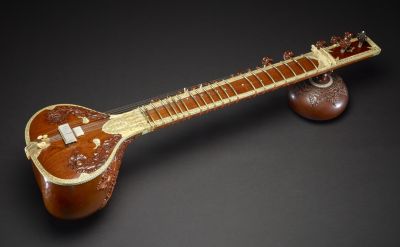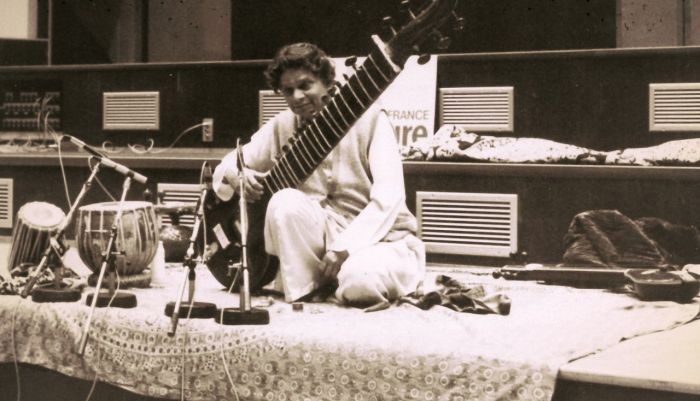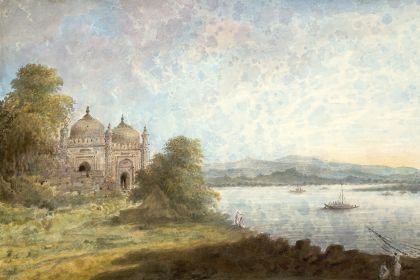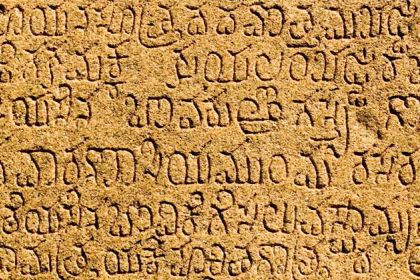SITAR
The tapped harmonics of Balaram Pathak's sitar

Sitar designed by Nodu Mullick
Music Period: Indian Classical
Country: India
Genre: Raga
Musical Mode: Phrygian Mode
Piece of Music: Bilaskhani Todi Raag
Balaram Pathak was not only one of the most talented Indian classical musicians of the 20th century but also the mind that devised a unique performing style for the sitar, with the sounds extracted from the instrument coming up surprisingly delicate. Even though his performing technique has inspired many adepts of Hindustani tradition including Ravi Shankar and Budhaditya Mukherjee, very little information is available about Balaram Pathak's actual life.
Musical roots of his lineage can be traced back to the 12th century, and this creative environment granted Balaram Pathak a comprehensive music training under the guidance of outstanding musicians of his family. Unfortunately, very few of his professional recordings were released, which is rumored to be a consequence of his cool attitude to studio work.
Balaram Pathak's distinguished style is characterized by the fine work in the upper register of his instrument. To create the aerial, almost lingering feel in his works, Balaram managed to master a technique of tapped harmonics which is widely used in Western string music but is rare for both Hindustani and Carnatic traditions of Indian classics.

The pure high tones of his tapped harmonics generate a long-lasting sound that hovers over the mid-register melody, creating a semblance of a polyphonic musical structure that is so lacking in classical music of the Indian subcontinent.
Listen to Raga Bilaskhani Todi performed by Balaram Pathak with his son Vinode Pathak on tabla drums:
According to the legend, Bilaskhani Todi raag was accidentally composed by a son of Mian Tansen—one of the founders of Hindustani music who lived in the 16th century. When Tansen died, his son sang his father’s favorite raga Todi to revive his spirit but, being grief-stricken, he mixed up the notes of the melody. The story claims that late Tansen made an approving gesture with his hand, demonstrating his satisfaction with the new composition.
Bilaskhani Todi raga features one of the basic keys of Indian classical music called Bhairavi thaat which can be correlated to the Phrygian mode in Western music.
In his work The Politics, Aristotle wrote that Phrygian mode “creates ecstatic excitement” and has an “orgiastic and passionate” effect on the listener. As a testament to its influence, the Phrygian mode has never dropped out of use throughout music history, appearing in seminal works by such composers as J.S. Bach, Ralph Vaughan Williams, and Philip Glass.
The mood can also be found in different modern genres, from jazz to heavy metal, with Metallica becoming pioneers in the latter. The Phrygian mode was used by both Howard Shore in the opening sequence of the film The Fellowship of the Ring and Andrew Lloyd Webber in Jesus Christ Superstar Overture.



